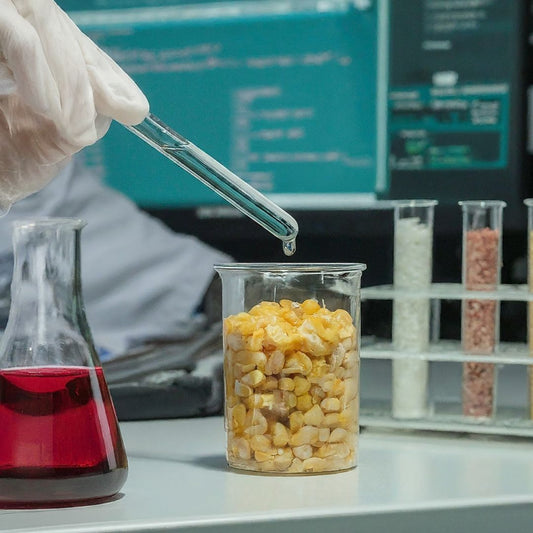The FDA is Considering Banning Red Dye No. 3 due to possible Health Concerns
Share
The U.S. Food and Drug Administration (FDA) is considering a complete ban on red food dye, an artificial coloring that is prohibited in skin care products, yet is still permissible for children to consume.
On December 5, the FDA convened a health committee meeting with the U.S. Senate to address a petition concerning Red No. 3, also known as Erythrosine. The FDA characterized Red No. 3 as a petroleum-derived color additive that imparts a vibrant cherry-red hue to food and beverages.
In November 2022, a petition was submitted by the Center for Science in the Public Interest, Breast Cancer Prevention Partners, and 22 other organizations, calling for the removal of the food coloring from all food products and ingested medications, including acetaminophen, commonly found in pain relievers and fever reducers, as well as diphenhydramine, used in allergy medications.
The petition asserts that the Delaney Clause requires the FDA to revoke the color additive regulations that allow the use of FD&C Red No. 3 in food products (including dietary supplements) and in drugs intended for ingestion, according to the FDA’s website.
Enacted in 1960, the Delaney Clause prohibits the FDA from designating any food coloring as “safe” if it has been linked to cancer in humans or animals, irrespective of the amount consumed.
During the committee meeting on December 5, Jim Jones, the FDA’s deputy commissioner for human foods, mentioned the ongoing petition. “We currently have a petition regarding Red 3 to revoke its authorization, and we are optimistic that we will take action on it in the coming weeks,” he stated.
St. Vincent’s Medical Center reports that Red No. 3 has been associated with cancer, especially thyroid cancer, as well as behavioral issues like attention deficit hyperactivity disorder (ADHD).
Since 1990, Red No. 3 has been prohibited in cosmetic products and topical medications. The FDA’s decision was guided by the Delaney Clause, following tests that revealed the chemical’s carcinogenic properties when administered in high doses to lab rats. Prior to the ban, various brands of lotions, lipsticks, and blushes included Red No. 3 in their formulations.
At present, food coloring continues to be commonly utilized in snacks and candies. Last year, the Center for Science in the Public Interest revealed that the FDA had faced “pressure” from maraschino cherry manufacturers, who rely on the dye for their sweet products, to retain the artificial coloring despite the discovery of carcinogens in it back in the 1980s.
“For 33 years, the FDA has not fulfilled its commitment or its responsibility to eliminate this known carcinogen from American food,” the organization stated.
On December 5, the FDA convened a health committee meeting with the U.S. Senate to address a petition concerning Red No. 3, also known as Erythrosine. The FDA characterized Red No. 3 as a petroleum-derived color additive that imparts a vibrant cherry-red hue to food and beverages.
In November 2022, a petition was submitted by the Center for Science in the Public Interest, Breast Cancer Prevention Partners, and 22 other organizations, calling for the removal of the food coloring from all food products and ingested medications, including acetaminophen, commonly found in pain relievers and fever reducers, as well as diphenhydramine, used in allergy medications.
The petition asserts that the Delaney Clause requires the FDA to revoke the color additive regulations that allow the use of FD&C Red No. 3 in food products (including dietary supplements) and in drugs intended for ingestion, according to the FDA’s website.
Enacted in 1960, the Delaney Clause prohibits the FDA from designating any food coloring as “safe” if it has been linked to cancer in humans or animals, irrespective of the amount consumed.
During the committee meeting on December 5, Jim Jones, the FDA’s deputy commissioner for human foods, mentioned the ongoing petition. “We currently have a petition regarding Red 3 to revoke its authorization, and we are optimistic that we will take action on it in the coming weeks,” he stated.
St. Vincent’s Medical Center reports that Red No. 3 has been associated with cancer, especially thyroid cancer, as well as behavioral issues like attention deficit hyperactivity disorder (ADHD).
Since 1990, Red No. 3 has been prohibited in cosmetic products and topical medications. The FDA’s decision was guided by the Delaney Clause, following tests that revealed the chemical’s carcinogenic properties when administered in high doses to lab rats. Prior to the ban, various brands of lotions, lipsticks, and blushes included Red No. 3 in their formulations.
At present, food coloring continues to be commonly utilized in snacks and candies. Last year, the Center for Science in the Public Interest revealed that the FDA had faced “pressure” from maraschino cherry manufacturers, who rely on the dye for their sweet products, to retain the artificial coloring despite the discovery of carcinogens in it back in the 1980s.
“For 33 years, the FDA has not fulfilled its commitment or its responsibility to eliminate this known carcinogen from American food,” the organization stated.





